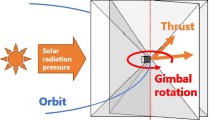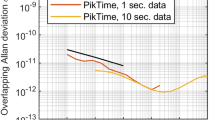Abstract
Spaceflight experiments will give us valuable insights on how gravity influences human biology at the cellular and molecular level. However, there are many limitations on conducting spaceflight experiments, such as operations cost, duration, replicability, and launch opportunities. In place of conducting microgravity experiments in space, clinostats and random positioning machines are used as suitable alternatives in a laboratory. The nematode Caenorhabditis elegans is a genetic model organism that has been sent to space to understand the effects of microgravity at the cellular and genetic level. In this study, we described and tested a simple new method to expose the animal C. elegans to simulated microgravity using a 2-dimensional (2D) clinostat. We confirmed our protocol to resemble space microgravity conditions by comparing microgravity-induced gene expression changes in two organisms, namely C. elegans and E. coli, with previously published gene expression studies in microgravity conditions. Using this method, we found that C. elegans development proceeded normally but fertility was slightly compromised. Our protocol will allow a standardization of ground-based microgravity experiments and increase the reliability of nematode gravity experiments.





Similar content being viewed by others
REFERENCES
Angelo, G. and Van Gilst, M.R., Starvation protects germline stem cells and extends reproductive longevity in C. elegans, Science, 2009, vol. 326, no. 5955, pp. 954–958. https://doi.org/10.1126/science.1178343
Arunasri, K., Adil, M., Charan, K.V., Suvro, C., Reddy, S.H., and Shivaji, S., Effect of simulated microgravity on E. coli K12 MG1655 growth and gene expression, PLoS One, 2013, vol. 8, no. 3. https://doi.org/10.1371/journal.pone.0057860
Brenner, S., The genetics of Caenorhabditis elegans, Genetics, 1974, vol. 77, no. 1, pp. 71–94.
Carranza-Garcia, E. and Navarro, R.E., Apoptosis contributes to protect germ cells from the oogenic germline starvation response but is not essential for the gonad shrinking or recovery observed during adult reproductive diapause in C. elegans, PLoS One, 2019, vol. 14, no. 6, article ID e0218265. https://doi.org/10.1371/journal.pone.0218265
Corsi, A.K., Wightman, B., and Chalfie, M., A transparent window into biology: a primer on Caenorhabditis elegans, WormBook, 2015, pp. 1–31. https://doi.org/10.1895/wormbook.1.177.1
Crawford, D., Libina, N., and Kenyon, C., Caenorhabditis elegans integrates food and reproductive signals in lifespan determination, Aging Cell, 2007, vol. 6, no. 5, pp. 715–721. https://doi.org/10.1111/j.1474-9726.2007.00327.x
Garrett-Bakelman, F.E., Darshi, M., Green, S.J., Gur, R.C., Lin, L., Macias, B. R., ... and Turek, F.W., The NASA twins study: a multidimensional analysis of a year-long human spaceflight, Science, 2019, vol. 364, no. 6436. https://doi.org/10.1126/science.aau8650
Goswami, N., White, O., Blaber, A., Evans, J., van Loon, J.J.W.A., and Clement, G., Human physiology adaptation to altered gravity environments, Acta Astronaut., 2021, vol. 189, pp. 216–221. https://doi.org/10.1016/j.actaastro.2021.08.023
Grimm, D., Guest edited collection: gravitational biology and space medicine, Sci. Rep., 2019, vol. 9. https://doi.org/10.1038/s41598-019-51231-8
Harada, S., Hashizume, T., Nemoto, K., Shao, Z., Higashitani, N., Etheridge, T., ... and Higashitani, A., Fluid dynamics alter Caenorhabditis elegans body length via TGF-β/DBL-1 neuromuscular signaling, NPJ Microgravity, 2016, vol. 2, p. 16006. https://doi.org/10.1038/npjmgrav.2016.6
Hauslage, J., Cevik, V., and Hemmersbach, R., Pyrocystis noctiluca represents an excellent bioassay for shear forces induced in ground-based microgravity simulators (clinostat and random positioning machine), NPJ Microgravity, 2017, vol. 3, p. 12. https://doi.org/10.1038/s41526-017-0016-x
Higashibata, A., Hashizume, T., Nemoto, K., Higashitani, N., Etheridge, T., Mori, C., ... and Higashitani, A., Microgravity elicits reproducible alterations in cytoskeletal and metabolic gene and protein expression in space-flown Caenorhabditis elegans, NPJ Microgravity, 2016, vol. 2, p. 15022. https://doi.org/10.1038/npjmgrav.2015.22
Honda, Y., Higashibata, A., Matsunaga, Y., Yonezawa, Y., Kawano, T., Higashitani, A., . . . and Honda, S., Genes down-regulated in spaceflight are involved in the control of longevity in Caenorhabditis elegans, Sci. Rep., 2012, vol. 2, p. 487. https://doi.org/10.1038/srep00487
Hughes, S.E., Evason, K., Xiong, C., and Kornfeld, K., Genetic and pharmacological factors that influence reproductive aging in nematodes, PLoS Genet., 2007, vol. 3, no. 2, p. e25. https://doi.org/10.1371/journal.pgen.0030025
Johnson, T.E. and Hutchinson, E.W., Absence of strong heterosis for life-span and other life-history traits in Caenorhabditis elegans, Genetics, 1993, vol. 134, no. 2, pp. 465–474.
Kim, S.M., Kim, H., Yang, D., Park, J., Park, R., Namkoong, S., ... and Park, J., An experimental and theoretical approach to optimize a three-dimensional clinostat for life science experiments, Microgravity Sci. Technol., 2017, vol. 29, nos. 1–2, pp. 97–106. https://doi.org/10.1007/s12217-016-9529-2
Kiss, J.Z., Wolverton, C., Wyatt, S.E., Hasenstein, K.H., and van Loon, J.J.W.A., Comparison of microgravity analogs to spaceflight in studies of plant growth and development, Front. Plant Sci., 2019, vol. 10. https://doi.org/10.3389/fpls.2019.01577
Lakowski, B. and Hekimi, S., The genetics of caloric restriction in Caenorhabditis elegans, Proc. Natl. Acad. Sci. U. S. A., 1998, vol. 95, no. 22, pp. 13091–13096. https://doi.org/10.1073/pnas.95.22.13091
Leandro, L.J., Szewczyk, N.J., Benguria, A., Herranz, R., Lavan, D., Medina, F.J., ... and Marco, R., Comparative analysis of Drosophila melanogaster and Caenorhabditis elegans gene expression experiments in the European Soyuz flights to the International Space Station, Adv. Space Res., 2007, vol. 40, no. 4, pp. 506–512. https://doi.org/10.1016/j.asr.2007.05.070
Lenaerts, I., Walker, G.A., Van Hoorebeke, L., Gems, D., and Vanfleteren, J.R., Dietary restriction of Caenorhabditis elegans by axenic culture reflects nutritional requirement for constituents provided by metabolically active microbes, J. Gerontol. A Biol. Sci. Med. Sci., 2008, vol. 63, no. 3, pp. 242–252. https://doi.org/10.1093/gerona/63.3.242
Li, W., Wang, D., and Wang, D., Regulation of the response of Caenorhabditis elegans to simulated microgravity by p38 mitogen-activated protein kinase signaling, Sci. Rep., 2018, vol. 8, no. 1, p. 857. https://doi.org/10.1038/s41598-018-19377-z
Muschiol, D., Schroeder, F., and Traunspurger, W., Life cycle and population growth rate of Caenorhabditis elegans studied by a new method, BMC Ecol., 2009, vol. 9, p. 14. https://doi.org/10.1186/1472-6785-9-14
Qiao, L., Luo, S., Liu, Y., Li, X., Wang, G., and Huang, Z., Reproductive and locomotory capacities of Caenorhabditis elegans were not affected by simulated variable gravities and spaceflight during the Shenzhou-8 mission, Astrobiology, 2013, vol. 13, no. 7, pp. 617–625. https://doi.org/10.1089/ast.2012.0962
Rui, Q., Dong, S.S., Jiang, W.K., and Wang, D.Y., Response of canonical Wnt/β-catenin signaling pathway in the intestine to microgravity stress in Caenorhabditis elegans, Ecotoxicol. Environ. Saf., 2019, vol. 186. https://doi.org/10.1016/j.ecoenv.2019.109782
Seidel, H.S. and Kimble, J., The oogenic germline starvation response in C. elegans, PLoS One, 2011, vol. 6, no. 12. https://doi.org/10.1371/journal.pone.0028074
Stiernagle, T., Maintenance of C. elegans, WormBook, 2006, pp. 1–11. https://doi.org/10.1895/wormbook.1.101.1
Stuhr, N.L. and Curran, S.P., Bacterial diets differentially alter lifespan and healthspan trajectories in C. elegans, Commun. Biol., 2020, vol. 3, no. 1. https://doi.org/10.1038/s42003-020-01379-1
Tucker, D.L., Ott, C.M., Huff, S., Fofanov, Y., Pierson, D.L., Willson, R.C., and Fox, G.E., Characterization of Escherichia coli MG1655 grown in a low-shear modeled microgravity environment, BMC Microbiol., 2007, vol. 7. https://doi.org/10.1186/1471-2180-7-15
Vukanti, R., Mintz, E., and Leff, L., Changes in gene expression of E. coli under conditions of modeled reduced gravity, Microgravity Sci. Technol., 2008, vol. 20, no. 1, pp. 41–57. https://doi.org/10.1007/s12217-008-9012-9
Wuest, S.L., Richard, S., Kopp, S., Grimm, D., and Egli, M., Simulated microgravity: critical review on the use of random positioning machines for mammalian cell culture, Biomed. Res. Int., 2015, vol. 2015, article 971474. https://doi.org/10.1155/2015/971474
Yu, L., Yan, X.M., Ye, C.L., Zhao, H.Y., Chen, X.Y., Hu, F., and Li, H.X., Bacterial respiration and growth rates affect the feeding preferences, brood size and lifespan of Caenorhabditis elegans, PLoS One, 2015, vol. 10, no. 7. https://doi.org/10.1371/journal.pone.0134401
Zhao, L., Rui, Q., and Wang, D.Y., Molecular basis for oxidative stress induced by simulated microgravity in nematode Caenorhabditis elegans, Sci. Total Environ., 2017, vol. 607, pp. 1381–1390. https://doi.org/10.1016/j.scitotenv.2017.07.088
Zhao, Y.Y., Li, D., Rui, Q., and Wang, D.Y., Toxicity induction of nanopolystyrene under microgravity stress condition in Caenorhabditis elegans, Sci. Total Environ., 2020, vol. 703. https://doi.org/10.1016/j.scitotenv.2019.135623
ACKNOWLEDGMENTS
Thanks to Dr. Rocel A. Indong for reading through the manuscript. Two-dimensional (2D) clinostat (Advanced Engineering Services., Co. Ltd. Model UN-KTM2 REV. NC. 2012.11) was provided by the Zero-Gravity Instrument Project (ZGIP) of the United Nations Office for Outer Space Affairs (UNOOSA).
Funding
This research was funded by the Space Technology Development Project, National Research Foundation of Korea, grant number 2021M1A3B6A01093157.
Author information
Authors and Affiliations
Corresponding author
Ethics declarations
Conflicts of interest. The authors declare that they have no conflicts of interest.
Statement on the welfare of animals. All applicable international, national, and/or institutional guidelines for the care and use of animals were followed.
Additional information
Shared first authorship.
Rights and permissions
About this article
Cite this article
Kalichamy, S.S., Alcantara Jr., A.V., Yoon, Kh. et al. A Simple Protocol to Analyze the Effects of Simulated Microgravity on Nematodes. Biol Bull Russ Acad Sci 48 (Suppl 2), S22–S33 (2021). https://doi.org/10.1134/S1062359021150097
Received:
Revised:
Accepted:
Published:
Issue Date:
DOI: https://doi.org/10.1134/S1062359021150097




